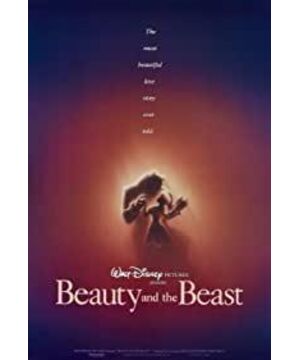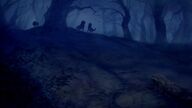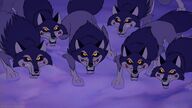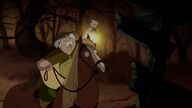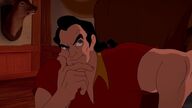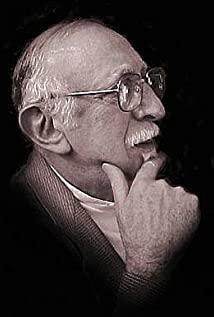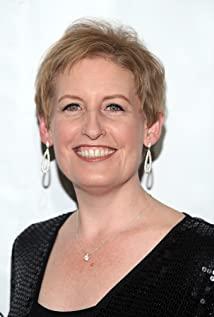Disney finally began to explore how to maintain and cultivate a healthy relationship-mutual respect and tolerance
This article is the fifth article in the Disney Princess movie review series.
This time it is finally my turn to be one of my three favorite Disney princess movies, "Beauty and the Beast" (the other two are "Tangled" and "Pocahontas"). Whether it is for film quality or personal interest, this film may be the first film that I will not criticize its shortcomings in the article (think about the fact that even "The Little Mermaid" was picked up by me...)
I personally like this movie mainly for the following three reasons:
-Super high music quality
-There are still enlightening characterizations to this day
-In-depth discussion of emotional relationships
The second and third points complement each other, making this movie actually express a story about equal rights in its bones . It is a pity that the awareness of equal rights hidden in this movie about thirty years ago is so advanced that it still plays a major role in the awakening of the concept of equal rights among the masses .
Next, I will start from three reasons why I personally like this movie and talk about why this movie is so deep in my heart that I can't bear to be harsh on it:
Group dance takes the lead, and the protagonist does the acting: music with a shift in focus but the same quality
As mentioned in the previous article, the joining of Alan Menken made the Disney princess movie officially go to the road of musical drama, and this work is of course inevitable. Compared with the previous film "The Little Mermaid", the biggest musical highlight of this film is the introduction of a large number of group singing songs : "Belle" at the beginning of the film introduces us from the perspective of ordinary villagers to this ordinary French town with a soul but Not to be reconciled to the mediocre beautiful girl Bell (the first non-native "princess" in a Disney princess movie); "Gaston" , starred by Gaston's little friend Laifu and bar mobs , allows the audience to appreciate a complete patriarchy what a vulgar life goals and values cancer is boring; when the relationship between Bell and the beast fell to freezing point, the castle servants kindly prepared a feast table for her, "be our Guest" let us see the servants are The icy curse has sealed the vigorous enthusiasm for ten years. In addition to these three main works, Gaston’s "Mob Song" when Gaston used the mob's anger to besiege the Beast Castle is a variation of "Be Our Guest" . It is also a song that expresses inner excitement and fanaticism. There are two completely different styles between the singing and singing groups; the other song "Human Again" performed by the servants of the castle is to push the expectation that Beauty and the Beast are about to be cultivated to the climax before the final battle. .
The addition of group singing makes the characters of both pros and cons (castle vs. township) more colorful in this work , so that the story setting of this work is not grand in terms of the fullness of the world view and the creation of the audience's sense of substitution. It is a bit taller than the magical atmosphere of the "Little Mermaid" . Because the pen and ink are spilled too much on the outline of the group portrait, the amount of music left for the male and female protagonists is correspondingly reduced. This is the only character among the Disney princesses who does not have his own solo character song or the theme song of the male and female duet (even the frog princess Tiana has a princess-like "Almost There", and does not sing in the film Melida can also use the theme song as her character song to appear in Disneyland's performance).
Although from the perspective of an ordinary movie, it is not a big problem whether the male and female protagonists have their own character songs, but as a musical—especially Disney's musicals, the presence or absence of character songs is important for subsequent derivative works and integrated marketing. The development convenience and the probability of success are the most critical influencing factors-"Frozen" is the most successful positive model, and the negative model mentioned above is the frog with a less popular character song style (jazz style) Princess Tiana (despite the skin color factor, on the other hand, Hua Mulan and Pocahontas, who are yellow races, only rely on "Reflection" and "Color of the Wind" to kill the Quartet). Because of this, in the subsequent musical of the same name, Bell and the Beast have added their own solo songs-"Home" and "If I Can't Love Her", which also makes the character setting and emotional motivation of the hero and heroine A lot plump. Of course, these are things to follow, but we should see: In the absence of relevant character songs, the film still interprets Bell and the Beast under the dual protagonist structure. This has to be attributed to the film’s advanced equal rights. Excellent role-building skills under the leadership of consciousness.
Living with each other and transforming each other: the successful dual protagonist shaping
In the last review article of "The Little Mermaid", I personally criticized Prince Eric, although later in the comment area, a friend listed the details of a series of films that showed Eric's noble character in the film to prove that the prince is actually a man. Good person, but my feeling of alienation from the prince during my personal viewing process is more or less proof: in the upper princess movie, Disney’s skill in shaping the prince’s inner emotional motivation is still inferior to the princess. The movie playing the part where the prince saves the princess is "Sleeping Beauty," and finally violently died), which made the audience feel uncomfortable with the combination of the two people with unequal portrayal depth.
In this film, it can be seen from the title that Disney played a big one this time-the dual protagonist design is the first time in a princess film (well, although there are three heroines in "Sleeping Beauty"-three A fairy), so we are very pleased to see in the movie that the "princess" and the prince have received unprecedentedly equal portrayals. In addition to the two protagonists, the shaping of the villain also made this masculine cancer Gaston, who is handsome in appearance and dirty in heart, deeply rooted in the hearts of the people. Therefore, the emotional collision between the three characters makes the relationship tension of the characters in this film reach a level that is rare in the princess series .
The most commendable point in the characterization of the film is that the film's exploration of the characters' deep psychological motivation has reached the level of Pixar's mid-term film. Unlike the first four princess movies, the princess's role motivation is mostly out of physical imprisonment and the desire for true love. This film focuses the discussion of "imprisonment"/"freedom" into the spiritual level .
For Bell, she is just an ordinary village girl in an ordinary French town who likes to read books and loves the spiritual world more than the real world . If you follow the previous princess movies, she will at most arrange a pursuit of the true love depicted in romance novels. The slut setting of "The Little Mermaid" is similar to the routine in "The Little Mermaid" that Ariel has an affection for the human prince because of the collection of human creations. However, in the first song "Belle", the film focuses on her reading personality and other townspeople’s misunderstandings and doubts about her. The audience can see from the first impression that this "princess" Difficulties and longings are completely different from previous princesses: in her life, she has constantly encountered incomprehension and condemnation of her lifestyle and lifelong pursuits. What she pursues is not true love, but spiritual independence and satisfaction. In the musical, the new theme song "Home" for Bell further analyzes her personality and situation more deeply (please allow me to make a tap: I strongly recommend everyone who is interested to visit Shanghai Disneyland. Watching the Chinese version of the "Beauty and the Beast" musical, this is not one of the best Chinese musicals I have personally seen so far. I will definitely not regret spending two meals for a 200 ticket~)
Even today, the situation encountered by such a woman in real life is not much better than Bell's situation before meeting the beast : today is the mainstream society, the second and third tier cities and even lower crowds. In China, families that don’t care about women’s spiritual pursuits and self-realization can be seen everywhere. For women, as long as they can find a man and start a family, it is considered to have completed one of the two mandatory questions in life. As for childbirth, it is the most important thing in life-even for men, "being an official and making a fortune, getting a family and having children" Four words can sum up the life requirements of most ordinary families for their own boys. In the film, Gaston's "good family picture" when he "proposed" to Bell is probably the same as most ordinary parents today's vision of their daughter's future.
Therefore, in 1991, the film portrayed such a "rebellious" Bell, whose consciousness is advanced and intends to use the film to subtly influence the ideology of the next generation to change the society's inherent expectations of women's "ambition" It's obvious.
On the other hand, let's talk about the male lead. The beast is the first prince promoted to the protagonist in a Disney princess movie. As far as the protagonist is concerned, a big unspoken rule is: oneself needs to complete one's own growth and sublimation in the movie. Ordinary supporting actors may also need to reflect their own growth, but for the protagonist, this growth must be visible to the naked eye and can greatly promote the plot. The beast was one of the few male protagonists in the Disney princess movies before the 3D era that showed the most profound changes in themselves (of course, this is not just the change in the appearance of the beast into a human body). At the beginning of the film, it quickly confessed that the beast was punished by the fairy because of its stubborn personality and judging by its appearance. For most of the first half of the story, the beast is still an extreme self-centered person who doesn't know how to control his temper and doesn't know how to respect others. But there are still some kind parts in his heart. Through the encounter with Bell and a series of subsequent coincidences, the kind side of the beast's heart was stimulated (saving Bell from the wolves), and he was accepted by Bell. And with the help of Bell who is more mature in spirit, he completed his psychological perfection and personality integrity.
Driven by the compact plot, the two characters relied on the beast to be freed from material confinement and reflected their spiritual value, and the other relied on Bell to discover his residual kindness from the spiritual confinement, and finally completed the transformation of personality . Such an excellent setting can be said to be a height that is difficult for many subsequent Disney movies to reach, so the character shaping of this film is really worthy of my praise.
Let Disney Dad teach you about dating: the way to respect each other's emotional relationship
As mentioned in the title of this article, this movie has advanced affirmative consciousness. This movie can be described by a key word- "respect" .
The importance of respect in emotional relationships—and even the discussion of the many elements of maintaining and nurturing intimacy are often completely ignored in previous princess movies: as long as the princess and the prince see the right eye, they will be able to overcome the difficulties and eventually To realize "Happily Ever After", as for how to maintain the relationship and support the two, it seems that directors never think that it is a problem that children who enter the cinema with a princess dream need to consider .
In "Beauty and the Beast", Disney finally began to explore how to maintain and cultivate a healthy relationship-mutual respect and tolerance .
As mentioned above, the beast explored its inner goodness with the help of Bell and finally realized the integrity of its personality. In fact, the relationship between the two cannot be established without mutual respect: Bell respects the ugly appearance of the beast and puts his guard against contact with him (in fact, Bell is indeed being rescued by the beast and found him. Only after the inner kindness did he open his heart); and the beast respects Bell, who is considered a freak by ordinary townsfolk, and also satisfies her spiritual needs and provides her with a library of countless books.
The villain Gaston is a footnote to the two sides of the keyword "respect" relative to the male lead beast. For Gaston, the meaning of women to him is no different from that of most patriarchal cancers today: husband and child, and continue to descendants. In his eyes, love means pure possession-and this is exactly what the beast tried to do when he met Bell for the first time-the other party's spiritual pursuit and personal dignity do not need to be taken into account at all, and then there is the opening of Gaston. The front foot confessed to Bell and the back foot mocked his father with Laifu in front of Bell. What is embarrassing is that Gaston, as the best negative teaching material in such an emotional relationship, can still be seen everywhere in today's society. It has to be said that it is the sadness of today's society, and it is also the advanced equal rights of this film. The manifestation of consciousness.
Although born out of real French folk tales, the hidden educational significance of this film is no longer limited to "you can't judge people by appearance/true love doesn't look at appearance". The lofty point of this film in the history of Disney film lies in: it truly elevated the importance of "people" in the film to an unprecedented height, thereby adding to the renaissance of Disney princess film history and even the golden age when Disney took off at the end of the 20th century. The most shining stroke .
View more about Beauty and the Beast reviews


